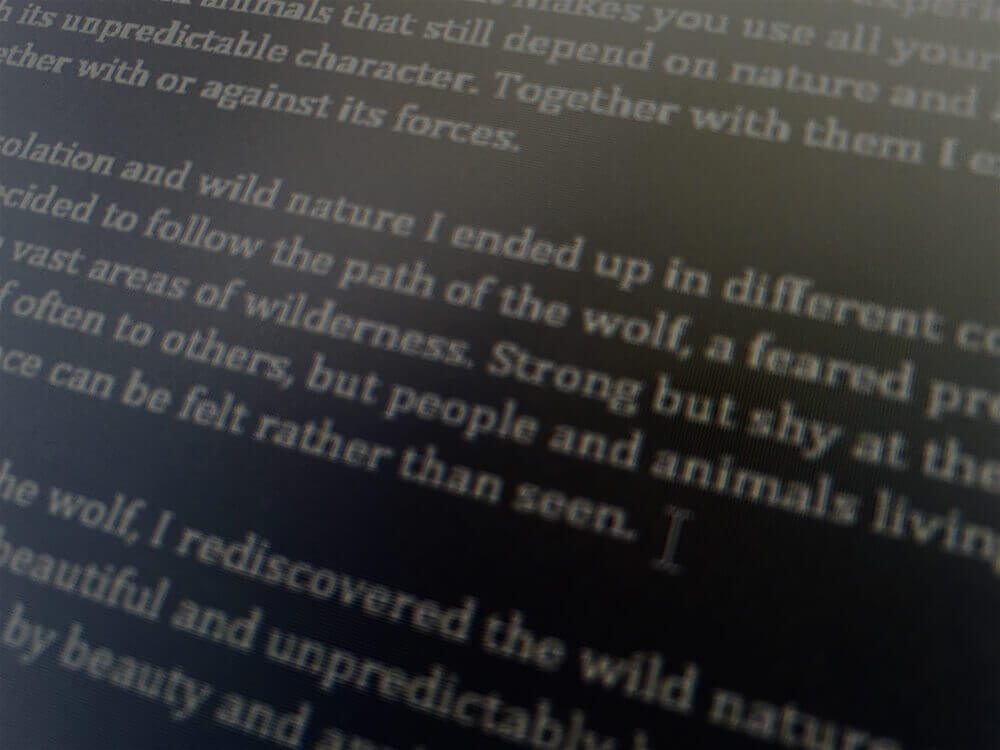EDUCATION
Writing a Project Statement
BY GEMMA PADLEY
Where to start with penning a killer project statement
“The bottom line is: give the accompanying text the same respect as you would your images”
Gemma Padley is a freelance journalist and editor who has worked at the British Journal of Photography and written for a host of clients including Foam, Photomonitor, 1000 Words Magazine, Elephant magazine, AnOthermag.com, and Magnum Photos. In the first of a new educational series, she gives her thoughts on writing a project statement – why it’s important, and why you should probably be considering it earlier in your project than you already are.
You don’t have to be a brilliant writer to pen a strong piece of text about your work, but it does require a bit of time, thought, and care to get right.
After spending months perfecting a project you’re just about ready to send it out into the world – by uploading it to your website, perhaps, or emailing a PDF of the work to editors in the hope they will publish it. And then you realise to your horror that you haven’t written a statement to go alongside the images. So you rattle off something, hoping it conveys the idea behind the work well enough.
Unless you are a naturally gifted writer, (and even then writing a good piece of text takes time and care), the statement you have dashed off may not do your work justice. It is a shame to have spent so long working on the images only to write a shoddy accompanying text at the last minute. While a project should stand on its own, a concise, well-crafted statement can enhance the work by adding useful context. A well-written statement also makes you look professional and creates a good first impression – if you demonstrate that you can write fluidly, confidently and clearly about your work, editors and other industry professionals are more likely to take you seriously. Besides, a badly written statement (full of waffle, grammatical errors, or worse, spelling mistakes) can diminish the work and even put editors off.
A lot of the photographers I’ve spoken to over the years are quick to tell me that they hate writing about their work – they can’t do it, it’s too difficult, they don’t see the point, where and how should they start? All valid points since the creation of a solid and compelling piece of text is never a walk in the park, but it is very doable if you take the time to learn how and practise honing your writing skills.
Firstly, don’t think about the project statement as something to be done after you’ve made the work; start writing it from the get go. Make notes as you go along that you can pull together into a draft and fine-tune as the work evolves.
So what should be in the statement? In essence, a project statement should explain clearly and concisely what the work is about; where the idea came from; why you wanted to make it; how you went about doing it; and why you chose the approach you did. You could also briefly explain where you hope to take the project next – if it’s an on-going body of work, do you have plans to revisit the place you shot it, for example, or if it’s finished, do you hope to make it into a book or exhibit it?
It should have a clear focus, be written in plain, non-flowery language, and avoid sweeping statements. You don’t want to overwhelm the reader. Think in short sentences that flow well, and before you start writing sketch out a basic structure – a snappy opening paragraph that sets out the main idea or ideas of your work, two or three paragraphs that go into a bit more detail about the what, when, where, why, and how of the project, and then a short closing paragraph that ties everything up.
It’s helpful to go back over what you’ve written a few days later with a view to taking out extraneous words, checking the basics (grammar, punctuation, and spelling) and asking yourself if what you’ve written makes sense. Also check that your text matches the work you’ve created – it’s amazing how often people will write about the project they hoped to make but didn’t. Ask for feedback from a confidant and be prepared to take comments on board.
Once you start writing about your work, it’s not as scary or difficult as it seems. It’s about communicating the idea behind your work as clearly as possible. The bottom line is: give the accompanying text the same respect as you would your images.
